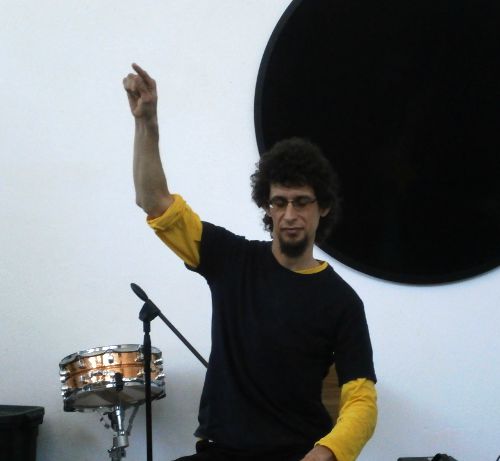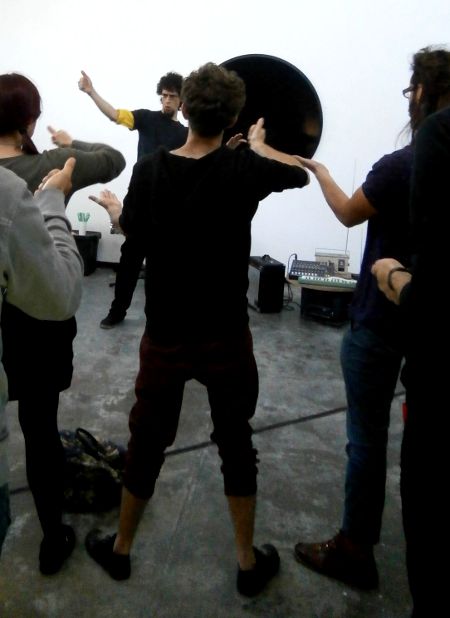Silent Noise via Dum Ka Pa
Over the past year and a half I’ve been working full time as a music and art teacher to mostly primary school students and students with special needs . One of the techniques that I’ve developed is a simple hand sign and body percussion system which has come to be known as Dum Ka Pa (DKP). A system loosely based on the systems used for teaching middle eastern percussion.
The initial intention of the system was to teach rhythm however this system has developed into a broad exploration of the nature of sound, not just auditory (as we hear with our ears), but also tactile (vibration) and kinetic* (the way we move in response to sound).
Over the past year I’ve been doing a great deal of research around sensory perception, especially how we construct our conception of the world via our senses. This process is not entirely objective or straightforward and leads to many interesting questions which end up being very useful grist for my creative mill.
A serious exploration. However my intention has always been to keep it fun for myself and the people I work with. So my method is slowly evolving into a springboard for physical theater with madcap tendencies such as Normal Noise , a performance I work-shopped earlier this year with young deaf performaners, and even experiments with Sign Rap using South African Sign Language (which I am currently learning).
Recently I’ve started using my techniques to create participative experiences with adult audiences – an exploration of sensory perception by turning the body into a kinetic music machine, an energetic and enjoyably absurd activity. Can you hear sound without noise?
During November I had the opportunity of performing as part of the Paarden Eiland Concert series where I performed Silent Noise and the following images give a rough idea of the manner in which the performance unfolds.
*I’ve started experimenting with the term ‘kinetic melody’ – a term borrowed from Oliver Sacks who used it to describe the manner in which people with Tourette syndrome are able to calm tics through engaging with rhythmic activities.

Silent Noise intro: A backdrop of pink noise is played over the sound system to induce a sense of auditory deafness. I ‘draw’ the texture of the sound by tracing a large circle with a jittery finger in the air. (pic: Kim Gurney)

Silent Noise step 1: I then introduce myself (silently) and explore a few tactile approaches with the audience e.g. eating crunchy food and here, tapping a chopstick clenched between the teeth. (pic: Kim Gurney)

Silent Noise step 2: I use my rudimentary sign language to tell the audience what I need them to do, essentially “look at me! follow my instructions!” (pic: Kim Gurney)

Silent Noise step 3: Then I switch the pink noise off – a pregnant silence. I start demonstrating body percussion using three fundamental signs.DUM – a chest thump using a clenched ‘thumbs up’ fist. KA – a snappy ‘rim shot’ using two fingers on the forearm. PA – a muted clap with two cupped hands together. Amazing to hear a room full people thump their chests simultaneously! (pic: Kim Gurney)

Silent Noise step 4: Kinetic melody. Hands no longer impact with body, however physical cues result in us still ‘hearing’ the sound internally (here you can see me making my ‘dum!’ face 🙂 (pic: Kim Gurney)

Silent Noise conclusion: Finally after much rhythmic hilarity, the pink noise is switched back on and we all draw it in the air. The END (pic: Kim Gurney)
One Response
Subscribe to comments with RSS.

[…] enough to be part of the launch event and happily subjected the audience to a participative Silent Noise performance, a technique I’ve been using in my […]